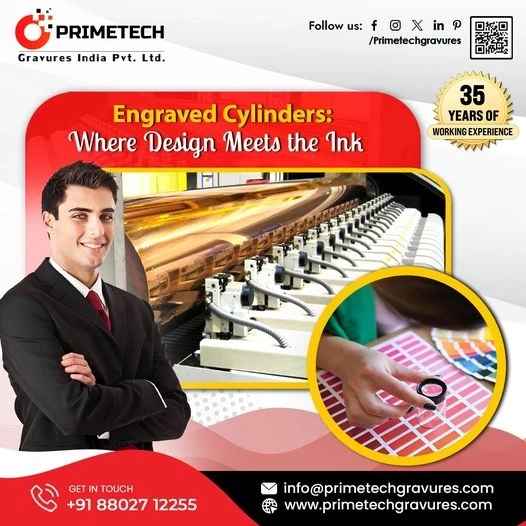Whether printing a single profile or intricate design elements for commercial printing requirements, achieving sharp and precise results is essential. In the world of commercial printing, where first impressions matter the most, the use of colour and ink plays an important role in creating visually appealing and impactful prints. Therefore, it is necessary to get a basic idea of the science behind the use of colours and ink in commercial printing.
The manufacturers of rotogravure printing cylinders in India understand that the nuances of colour and ink can significantly enhance the quality of the products. In this guide, we will discuss the intricacies of using colour and ink in commercial printing to achieve the best results.
Understanding the Basics of Commercial Colours
Before we start explaining the complex details of colour and ink in commercial printing, it is crucial to have a fair understanding of the basics. According to the Colour Management Service in India and in the printing world in general, colours are typically categorised into two types: process colours (CMYK) and spot colours.
Process colours (CMYK)
Process colours are created by combining four primary ink colours: Cyan, Magenta, Yellow, and Black (CMYK). These colours are mixed together during the printing process to produce a wide spectrum of hues. Each process colour represents a percentage of its maximum intensity. For example, 100% of each colour yields a pure colour, while a combination of all four at 100% creates a deep, rich black. They are suitable for reproducing a vast range of colours, making them ideal for full-colour printing. These colours are mixed during the printing process to create a wide spectrum of hues. They are commonly used in full-colour printing for applications such as brochures, posters, and magazines.
Spot colours
Spot colours, also known as PMS (Pantone Matching System) colours, are pre-mixed inks that are formulated to achieve specific colours according to a standardised colour-matching system. These colours offer a high level of colour accuracy and consistency across different printing jobs. This makes them preferable for brand colours or when precise colour matching is crucial. While the Pantone system includes a vast array of colours, the spot-colour approach limits the designer to a predefined colour palette. This limitation ensures consistency but may not be suitable for jobs requiring a broad spectrum of colours. The best thing about spot colours is that they can be enhanced with special effects such as metallic or fluorescent inks, providing options for unique and eye-catching prints. Colour Management Services in India find this system ideal for achieving accurate and consistent colours across different printing jobs.
Optimising Colour for Different Printing Processes
Commercial printing involves various techniques, such as offset printing, flexography, and digital printing. Each method has its own unique characteristics and requirements for colour optimisation.
Offset Printing
CMYK is the standard for offset printing. All the images and graphics have to be converted to CMYK mode during the design phase to achieve accurate colour reproduction. Attention to ink density and colour profiles is essential to achieving consistent and vibrant results. Regular calibration of equipment, including the offset printing press and colour management systems, is required to maintain the integrity of colours throughout the print run. Since offset printing excels at reproducing intricate details and vibrant colours, it is a preferred choice for projects such as magazines, newspapers, and brochures.
Flexography
This method often uses spot colours because of its consistent results. However, some flexo presses also support CMYK printing. The choice of inks, especially considering water-based and UV-curable inks, plays a role in achieving optimal colour results. Attention to plate and cylinder quality is important to ensure precise ink transfer and consistent colour reproduction on different substrates, contributing to the overall success of the flexographic printing job.
Digital Printing
Digital printers can reproduce a wide range of colours, making them suitable for full-colour printing. However, it\'s essential to calibrate the printer for colour accuracy. Designers should ensure that their digital files are in the appropriate colour mode, such as RGB for vibrant digital displays or CMYK for traditional prints. Calibration of digital printers and using colour profiles specific to the printing device contribute to achieving accurate and consistent colour results. Moreover, taking advantage of the variable data printing capability allows for personalised colour elements in each print, enhancing the overall impact of digital printing projects.
Mastering the use of colour and ink in commercial printing is a creative process that involves a deep understanding of design principles, printing technologies, and colour management. The manufacturers of rotogravure printing cylinders in India, who cater to the evolving needs of the printing industry, work tirelessly on innovations to enhance the quality and reliability of their products.
By staying abreast of industry trends, Primetech, the leading manufacturer of printing cylinders in India, can be your valuable partner in the vibrant world of commercial printing.



